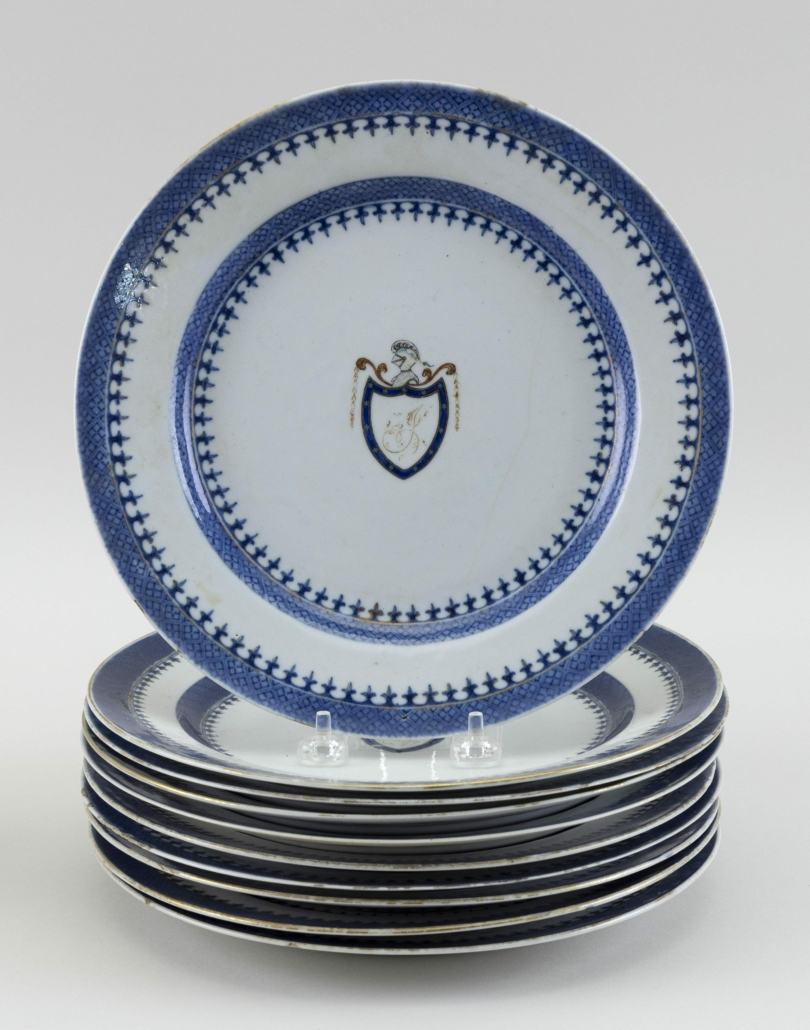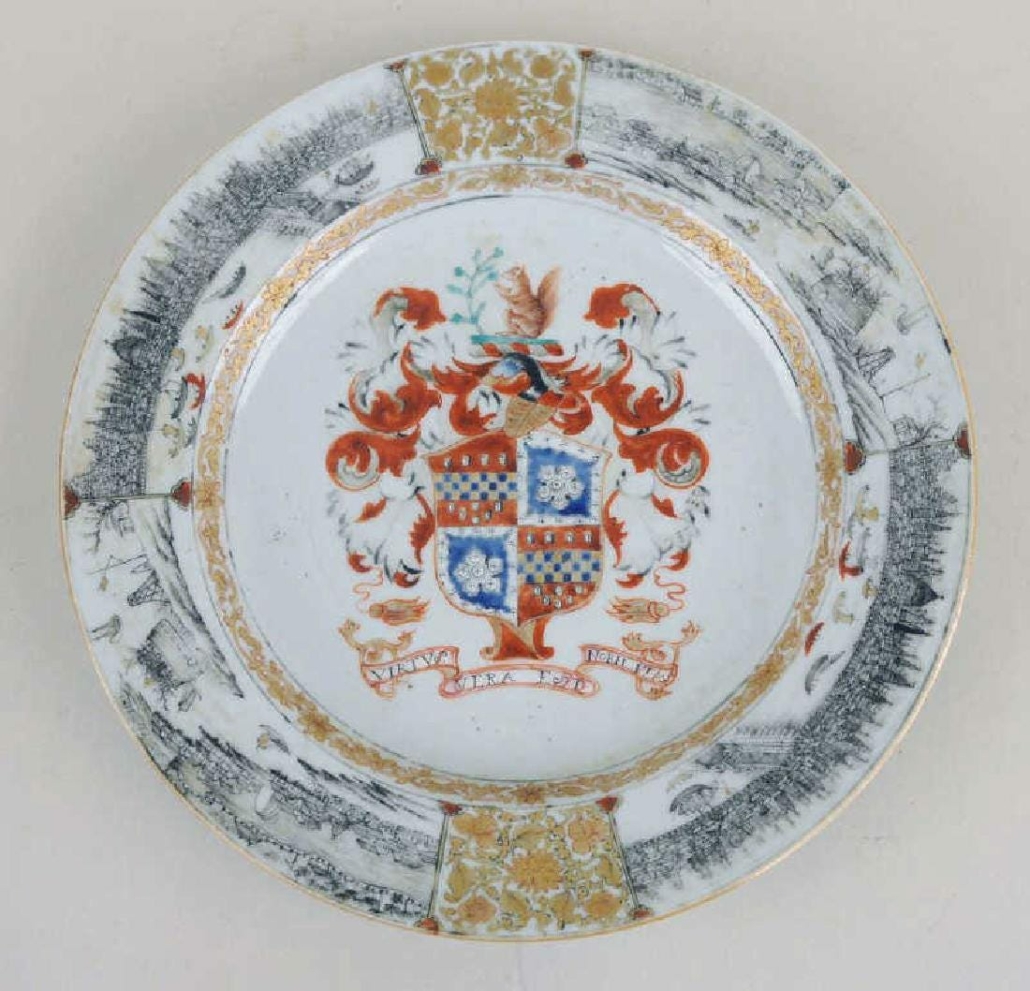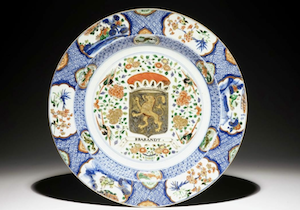
NEW YORK — Long before Europeans perfected making fine china from clay, Chinese artisans mined kaolin (white clay) to create beautiful wares. Examples of their exquisite work were first imported from China to Europe in the 14th and 15th centuries and were well received. By the time trade routes fully opened up in the 16th century, China was exporting items made specifically for Western audiences. None of those items were more desirable than Chinese Export armorial porcelain – wares bearing coats of arms.
Armorial pieces not only indicated one’s social standing but helped guide fashion trends in both the forms they took as well as their style of decoration. “An unusually early example of export porcelain is a ewer decorated with the royal arms of Portugal; the arms are painted upside down, however — a reflection of the unfamiliarity of the Chinese with the symbols and customs of their new trading partner,” according to the Metropolitan Museum of Art.
The earliest Chinese Export armorial porcelain pieces were in keeping with the tradition of blue-and-white porcelain that was dominant in China. The monochromatic palette, however, proved unsuitable for armorial services because the limited choice of colors made it difficult to discern a coat of arms. Polychrome-painted porcelain in varying hues of oranges, greens, golds and browns became popular instead.

The 18th century was a high-water mark for Chinese Export armorial porcelain. A century later, demand began to taper off, but American presidents were still commissioning porcelain services from Canton and other areas in China into the 1800s. Not every US president had a dinner service set commissioned, though many did.
Interest among scholars — and collectors — remains high in White House china. In the realm of Chinese Export Presidential china, the Thomas Jefferson service is the standout. The sparing, elegant service has blue borders running around the rim of the plates, and in their centers is a coat of arms for Jefferson with a capital letter “J.” An extensive dinner service acquired in the 19th century by Jefferson’s great-grandson, Thomas Jefferson Coolidge, and passed down in the family sold in July 2021 at Eldred’s, including a set of 10 plates that attained $25,000 plus the buyer’s premium.

Many services were fairly simple, but a notably elaborate stylistic departure was created for the British market circa 1790, featuring the arms of Ker-Martin. The service has borders with allegorical cartouches showing the four quarters of the world, and the center medallion showcases an image of Hope looking out to sea and sitting next to an anchor. One set from this service sold for $19,000 plus the buyer’s premium in February 2019 at Hindman.

Another service with exuberant decoration is represented by a circa-1735 Chinese Export armorial plate bearing the arms of Lee of Coton Hall, which brought $14,000 plus the buyer’s premium in January 2018 at Schwenke Auctioneers. Some consider it the finest armorial service commissioned by an English family. The border depicts early scenes of London as seen from the south bank of the Thames, with London Bridge at the right and the dome of St. Paul’s visible on the left. “The arms are those of Lee quartering Astley, circa 1735,” according to the auction house. The motto seen on the service, “Virtus vera est nobilitas,” translates to “Virtue is the True Nobility.”

Another interesting piece of Chinese Export armorial porcelain is a Provinces plate that was likely made for the Dutch province of Brabant (spelling differs from modern usage, indicating this plate was made to Dutch order). There are five known series of dishes bearing the arms of Dutch and Flemish provinces, and nearly two dozen unique arms have been identified, but there may be many more. This particular Provinces dish is painted with a central coat-of-arms surmounted by a coronet and bearing the inscription “Brabandt,” flanked by large peony blooms and birds. Running around the rim is a blue trellis-pattern band with various lobed cartouches of flowers. It ultimately realized $26,091 in June 2017 at Rob Michiels Auctions.
Experts believe more than 3,000 armorial services were produced, and new discoveries are still being made. Dinner parties might not be the social mainstay they were when these now-antique Chinese Export armorial porcelain services were delivered, and setting the table with plates festooned with the family coat of arms might come off as inordinately stuffy or even pretentious. But the allure of these wares, which allow you and your guests to dine as the elites of old did, continues undiminished.
# # #



